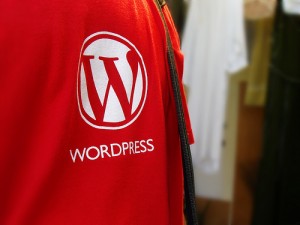
The theme is arguably the most important element of a WordPress blog. It’s the first thing users will see when loading in, and will impact their perceptions before they even start reading. The impression a theme leaves on a blog’s readers will determine how they view the blog, what they think of the content and, ultimately, whether or not they’ll come back.
What a lot of authors don’t realize is that a theme accomplishes much more than making a first good impression. By studying how a blog is laid out, it’s entirely possible to accurately judge the author’s personality, what they generally write about, and the sort of content they produce. In certain rare cases, it may even be possible to discern an author’s industry.
I’ll give an example: James is a no-nonsense web designer who’s all about getting straight to the point. Since he doesn’t dress things up when he writes, the theme for his programming blog is crisp, sharp, and Spartan. Though easily navigable and pleasing to the eye, it’s also incredibly simplistic. He’d probably use something like this.
Chris, meanwhile, is an amateur photographer. While James’s blog put focus on what he wrote and kept things simple and clean, Chris will have a more flowing, artistic-looking layout which puts focus on the photographs he took. Photocrati would be more Chris’s speed.
Chris and James are entirely different people, who work in vastly different fields. In both cases, their themes reflect their personality, purpose, and field. More importantly, in both cases, visitors will know within the first few minutes whether or not the blog they’ve come across caters to them.
So how does one go about selecting the right theme for their blog?
The first piece of advice I’ll give is that if you’re really serious about turning your WordPress blog into a legitimate business, stay away from free themes. Aside from not receiving any sort of developer support, many free WordPress themes tend to include additional code, usually in the header or footer. There’s no way of knowing what this code does, nor can it generally be removed without
Before deciding on a theme for yourself, look at other blogs in your industry. Study how they’re laid out, and consider how this applies to your own blog. Choose a theme that lets you design your blog to look similar, but take pains to avoid directly duplicating anything; your theme needs to be reasonable unique.
Beyond that, look for a premium theme with an SEO-friendly structure, reasonable terms of use, a fair price, extensive documentation, extensive customization options, social media integration and compatibility with most browsers. Be sure to read the reviews before downloading anything; the best WordPress themes don’t come cheap. What this means is that if you select a poorly-designed theme, you’re making a rather costly mistake.
A blog’s theme is quite literally its face; it is what it presents to the world when it goes online. From a theme, it’s possible to determine an author’s personality, general content focus, and even the purpose for which they created a blog. Because of this, selecting the right theme can go a long way towards drawing in readers, just as selecting the wrong one can do a great deal to drive them away.
Image: Flickr/Gavin Llewellyn




